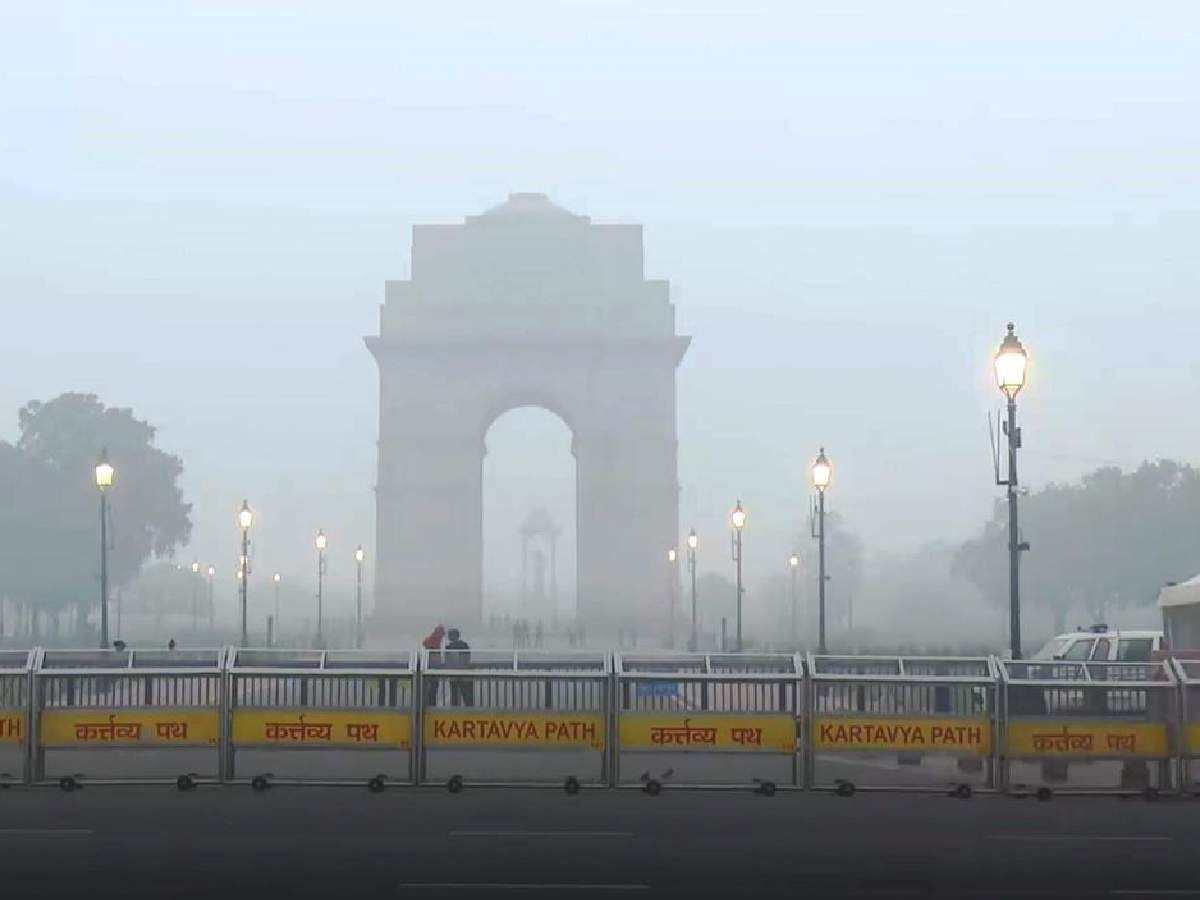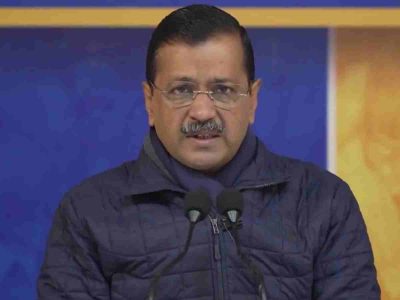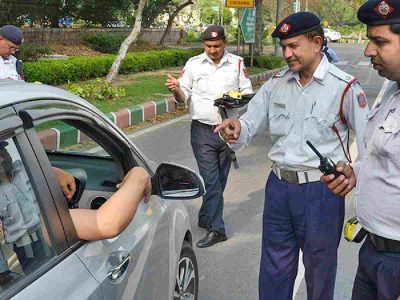Delhi AQI: Delhi, the national capital, grapples with severe pollution, particularly in winter. Yet, a press ing question looms—can we trust the data collected by pollution sensors, or is there room for manipulation?
To explore this, Patriot reviewed an RTI (Right to Information) request filed by environmentalist Varun Gulati, an expert in air and water pollution. Gulati sought clarification on the calibration of pollution sensors in India. In response, the Council of Scientific and Industrial Research–National Physical Laboratory (CSIR-NPL) disclosed that while a calibration facility for Online Continuous Emission Monitoring Systems (OCEMS) and Continuous Ambient Air Quality Monitoring Stations (CAAQMS) was established on February 28, 2024, it remains in the trial phase.
“This indicates that the nodal agency hasn’t yet verified the accuracy of the data from the pollution sensors installed in Delhi. With the facility still under trial, concerns arise about potential data manipulation, as the agency responsible for installing the sensors is also providing the calibrated data,” Gulati told Patriot.
Also read: End of an Era: IMA House at ITO set for demolition ahead of centenary
Calibration facilities still under trial
The CSIR-NPL explained that the facility’s primary objective is to perform product conformity tests for both OCEMS and CAAQMS. “It’s a complete product test, not an individual component test,” the agency clarified.
When questioned about the parameters tested, the agency elaborated, “Several factors are assessed, including measurement accuracy, linearity, response time, detection limits, repeatability, cross-sensitivity, and converter efficiency for systems measuring nitrogen oxides (NOx). Other vari ables like temperature, gas pres sure, and voltage influence are also monitored.”
The NPL underscored that full calibration and data validation would only be possible once the facility completes its trials. They further remarked that in the absence of calibration, pollution data might fluctuate—either showing lower or higher values due to time-related drifts.
Transparency issues in Delhi pollution monitoring
Environmental concerns have heightened over the lack of transparency regarding the certification and placement of CAAQMS in the capital. When Gulati queried whether the CAAQMS installed by Ecotech Private Limited were certified, the NPL admitted, “No calibration certificates have been issued, as the facility is still in the trial stage.”
In addition to this, the Central Pollution Control Board (CPCB), which operates the National Air Quality Index (NAQI) network, has established protocols for data col lection. However, environmentalists like Gulati have voiced scepticism over the reliability of this data. “The agency responsible for installing the air quality sensors hasn’t verified whether they meet CPCB standards,” he stated.
Strategic placements of sensors questioned
One of the more troubling allegations is that CAAQMS stations are being strategically placed in greener areas to skew data. Gulati pointed to an example where Delhi’s pollution department installed a sensor at Pusa, a green space, rather than in Qutubgarh or Ferozpur Banger—industrial zones with significantly higher pollution levels.
He further noted discrepancies in costs, stating that the CAAQMS in Delhi were installed at a much higher price than those in neighbouring Haryana, while also criticising the lack of transparency in the funds transferred between agencies and contractors.
Gulati also raised concerns about manipulated data from CAAQMS installed at waste-to energy plants in Delhi. According to him, the air quality stations there were set up by a Chinese firm, FPI. “I’ve filed an RTI for more details, but the Municipal Corporation of Delhi (MCD), which oversees these plants, has yet to respond. Their silence suggests they’re covering up their failings,” he added.
Industries beyond Delhi fuel pollution
While sensor accuracy remains a significant issue, Gulati highlight ed another major source of Delhi’s pollution—the surrounding industrial regions in Jhajjar, Bahadurgarh, Faridabad, Sonipat, Gurgaon, and Ghaziabad. These industries rely on biofuel and wood, continuously emitting thousands of units of gases, con tributing massively to Delhi’s deteriorating air quality.
The Delhi Pradesh Pollution Committee (DPCC) declined to comment on the matter.
With the calibration facility still in the trial stage and questions swirling about sensor placement and data integrity, concerns over the accuracy of Delhi’s air quality monitoring persist. Environmentalists argue that without independent verification, there is little to ensure that the capital’s pollution data reflects reality.
Also read: Consuming highly saline water, residents of Barwala, Sandesh Vihar, Najafgarh fall sick
Rs 22.9 crore smog tower defunct since March 2023
As the monsoon season recedes, Delhi once again braces for its annual air quality crisis, with pollution levels already slipping into the “poor” category. Yet, a Rs 22.9 crore smog tower, installed at Connaught Place to combat the city’s notorious air pollution, has been lying defunct since March 2023.
Sources in the Delhi Government revealed that the team responsible for operating the tower—comprising engineers, operators, and helpers—was removed in March 2024 due to concerns over the tower’s effectiveness. When Patriot visited the site to assess the situation, it was discovered that the display screens showing PM2.5 and PM10 levels were switched off, and none of the tower’s 40 fans were functioning. A lone security guard stationed at the entrance had no information on when, or if, the tower would resume operation.
Inaugurated by then Chief Minister Arvind Kejriwal in August 2021, the smog tower was designed to mitigate Delhi’s severe pollution levels. It was equipped with a downdraft system capable of filter ing 1,000 cubic metres of air per second, and it was expected to reduce pollution levels by 70-80% within a 50-metre radius and 15-20% within 300 metres. A team from IIT-Delhi, IIT-Bombay, and the Delhi Pollution Control Committee (DPCC) was tasked with evaluating its performance through a two-year study.
However, an RTI response in October 2022 revealed that over Rs 2.5 crore had already been spent on the tower’s operation and maintenance. Despite these costs, the tower has remained inoperative for months. A second smog tower, installed at Anand Vihar and funded by the central government, has faced similar scrutiny, with its maintenance costs projected to rise from Rs 10.2 lakh in its first year to Rs 12.5 lakh in the second year.
Critics have labelled the smog towers as ineffective. Environmentalist Bhavreen Kandhari pointed out the impracticality of such solutions: “Experts have warned that we cannot vacuum our way out of air pollution with smog towers. With each tower costing Rs 25 crore to build and Rs15 lakh per month to maintain, even the Delhi Pollution Control Committee concluded last year that their use is unjustified.” Kandhari further explained that reducing Delhi’s air pollution by just 17% would require around 40,000 such towers, a notion she called “impractical” and unsustainable.
“Instead of relying on temporary fixes like smog towers, it’s time the government focuses on addressing the root causes of emissions,” she urged.





